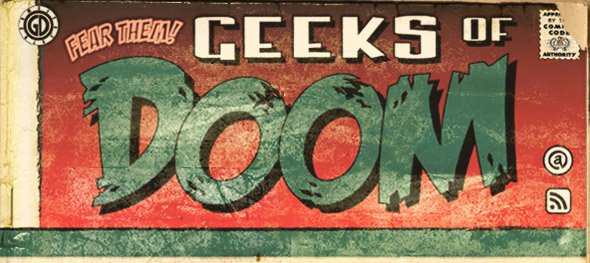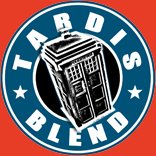
 Dungeons and Dragons, 4th Edition
Dungeons and Dragons, 4th Edition
by Jeremy Crawford, Mike Mearls, James Wyatt
Published by Wizards of the Coast
Released March 17, 2009
So, the last time I told you about the Second Player’s handbook, this time I’m going to go into what it feels like to play a game of Dungeons and Dragons in it’s new style, that we like to call 4th edition. I’m also going to go into what you need to start a game of your own, and where the best resources are, and if there are any good places I don’t mention, feel free to leave a comment, because I can always use them myself.
The first thing you’ll notice when actually playing a game of 4th ed is the strategic and board game elements that have been added to the game. This is the first time that the D&D miniatures game has been fully integrated into the game-play of the RPG, and I kind of enjoy it, but I can see the problems. Gone are the days when you had to picture the entire scenario of battle in your head, and then move and attack according to that picture. Now all the players have a pseudo-3D representation of where the enemies are, exactly how many there are, and where they are in relation to the players. You might say that half of the fun of the game was the imagination you put into creating the environments in your head, and I’d be forced to agree with you. However, what you get for more reliance on the miniatures is an increase in strategic elements for battles. Positioning has become very important as there are many bonuses that come from being certain distances from characters, bonuses for flanking enemies, you have to be aware of how many spaces you are away from enemies, and so on. If you’ve ever played a collectible mini-game such as Heroclix or Mage Knight, you’ll have a good understanding of what battle looks like now. Getting back to the player’s use of imagination to establish the action, I’d say you still use it to a certain degree, just that some of the heavy thinking has been removed. This is going to be a recurring element in 4th edition.
The second thing to tell you about is the actual combat system. The game designers have stated that they meant this edition to appeal to a wider audience, specifically the wider audience that plays World of Warcraft, and you can tell that right off the bat. Combat powers are broken down into three main categories: At Will, which can be used as often as you like, Encounter, which can be used once per fight, and Daily, which can be used only one time between rest periods. Players of WoW are used to these terms; in fact I confused Dave3 one time by using the term Daily in regards to a D&D session, which he took to meant I was playing WoW. Again, you no longer have to spend a lot of energy describing exactly what your character is doing, but you don’t get the creative juice of describing some awesome attack you just thought of. The game has done the heavy lifting for what your character can and cannot do, but they have taken away some of the more creative elements that used to determine combat. The advantage is that when combined with the map system, you can get great bonuses to attack, and you get the giddy thrill when you pull off your daily attack for spectacular damage. I personally have a good time with the new system. It can be a blast to work in concert with the other players and take down a room full of monsters, and the Dungeon Master our group has is great with adding flavor text to the attacks, so even if it’s an At Will that I’ve done a million times before, it still feels brand new. The system allows you to do as much with it as you put into it, so if you just say you’re going to use your Piercing Strike, it can get boring, but if you say you’re going to use you’re Piercing Strike to lunge at that Orc aiming for the chink in his armor that your parties archer just opened up, you can add more fun to the game. It’s like pretty much any RPG, you get out as much fun as you put into it so while some may complain that it’s become too simplified, or that the creators stole too much from WoW, if you put some effort into it, you’ll find a very enjoyable game. And of course, in the end, it all comes down to how the dice are treating you that day. Believe me, there’s nothing worse than going into the final encounter of an adventure, and the whole party can’t role a hit to save their (characters) life. It can make for a long night, but when you get those nights when your team is always hitting and the DM is rolling critical misses, you’ll be jumping and cheering and making some fun memories.
So how do you get started? Well there’s a couple of different ways to go. If you’ve never played a table top RPG before, or you’re an old D&D player who doesn’t want to spend a lot on a new system you may or may not enjoy, the best place to start is the Starter Kit. What you get in this is a small booklet containing a short three encounter adventure, some pre-made characters, some maps, and some pieces to represent monsters and characters. I would suggest this product to anyone playing for the game pieces alone; at $16.99 it will save you a lot in having to buy minis for the monsters your players will be fighting.
If you have a good time with that short introduction, you’ll want to move onto the 3 core rulebooks; the Dungeon’s Master’s Guide, the Player’s Handbook (Player’s Handbook 2 also available now) and the Monster Manual. Each book does pretty much what the title describes. The DM’s Guide shows any prospective DM how to create the adventure that the player will participate in, from creating the over-arching story, to balancing the individual encounters, and how to rule the whole game. The Player’s Handbook gives the actual player’s all the info they need to make the heroes they will be in the game. The first PH features 8 races and 8 classes, while the second PH offers and additional 5 races and 8 more classes. The Player’s Handbook also features the basic rules of combat and advice on how to play the characters. The Monster Manual is largely a supplement for DM‘s, and features information on the monsters that the players will be fighting. A second volume of this is to be released in May.
If you get those and start a game, and find you enjoy it, there’s a multitude of products you can pick up. The first recommendation I would make for players would be to pick up the “Power” series of supplements, of which two are out now, Martial Power and Arcane Power. These books provide a wide range of abilities and information on fighting type classes and magic users, and I’ve personally found the Martial Power book to be well worth the money. On the DM side, there’s any number of books to choose from. There’s at this time 10 published adventures for DM’s to use that tell a full fledged story, and a new one comes out every other month or so. Then there are books that give more treasure possibilities (Adventurer’s Vault), in depth info on dragons (the Dragonomicon), and special focus on undead creatures (Open Grave). Wizards of the Coast has been very good at releasing a book a month for either player’s or DM’s and the line up continues this year.
Of course, if you want to fully appreciate the combat system, you’re going to need maps. There’s a couple of ways to do this. There are nice dry erase maps that you can draw, erase, and redraw any number of rooms you want, just make sure you don’t use permanent markers. They’re a very nice tool, but a bit boring. Another tool available is the dungeon tile sets available from WotC. These run about $10 a set and contain cardboard tiles that you can combine together to make various locations. These look great and play very well, and can be found for not too much money, but you’re limited to the tiles they provide, so there might not be a particular tile you need to make your game complete. There are also more expensive 3D dungeon sets, which look even better than the dungeon tiles, but there get rather hard to set up and take down, and God forbid you set up a huge room, and you’re player’s decide to go in a different direction.
Other than that, all you need is some paper, a table, a bunch of weird looking dice, a gross of 2 liter Mt. Dew, maybe some chips, and four or five friends who have a couple hours to kill, and the skies the limit. Next time, I’m going to take a more in-depth look at Martial Power, and it’s recently released brethren Arcane Power and what they bring to the player’s table. Until then, keep those dice warm.






I think there’s been a couple new editions of this manual since the 2nd. I haven’t purchased one in quite some time, but they might even be up to the 4th or 5th by now.
Comment by Frogger Games — August 5, 2010 @ 6:54 pm